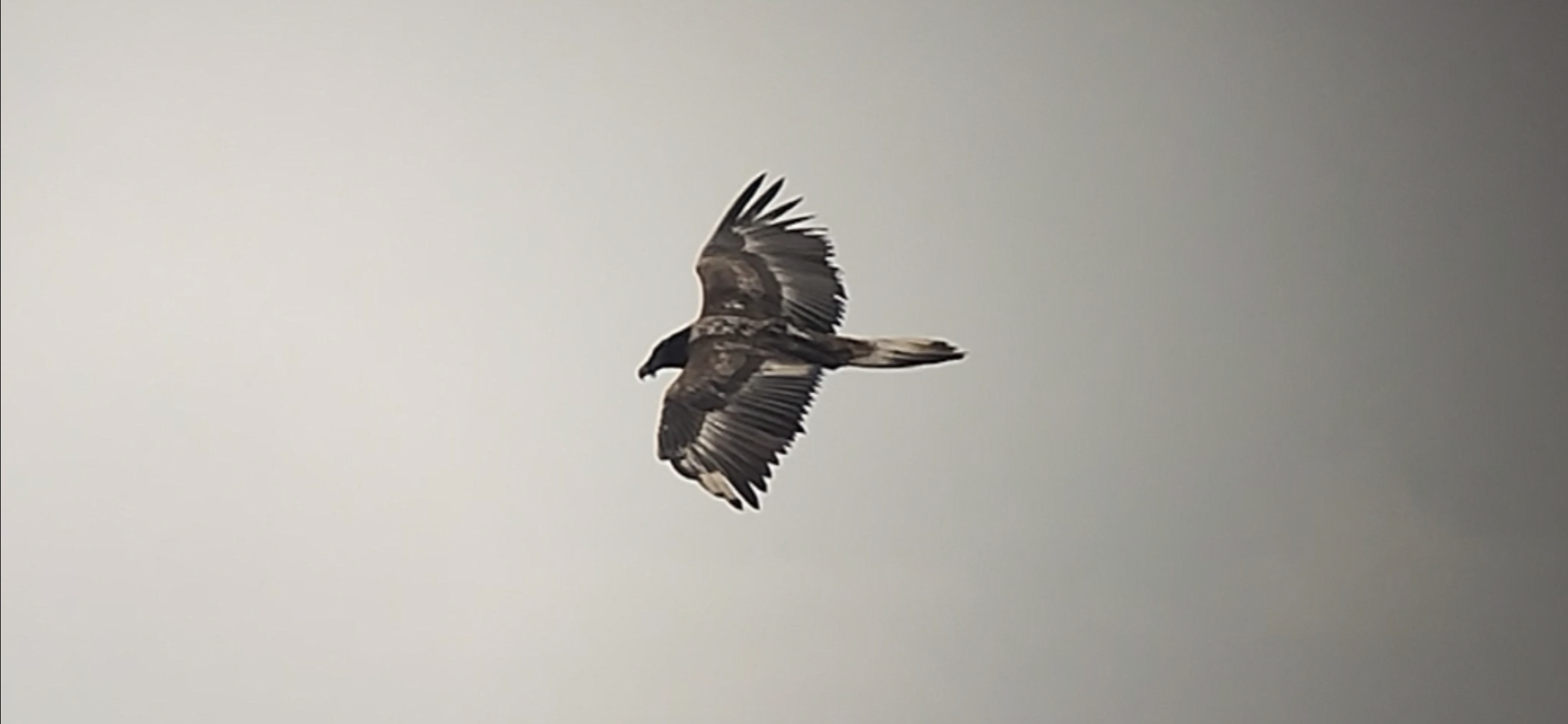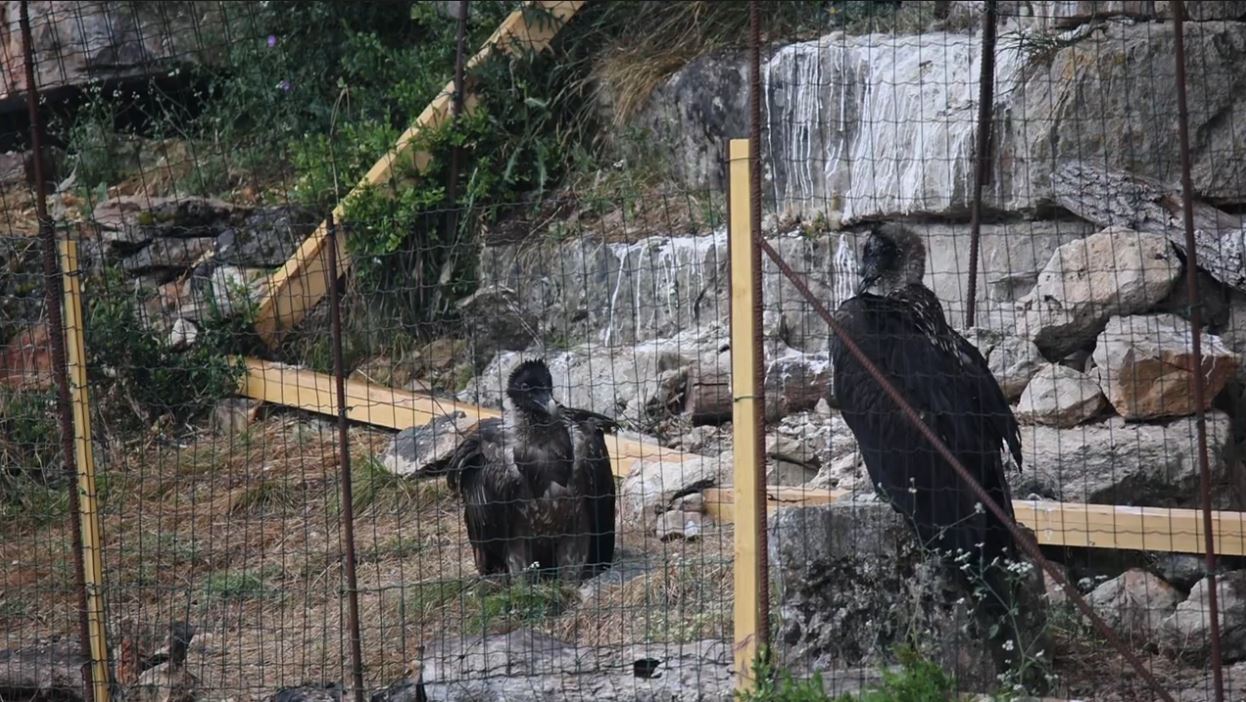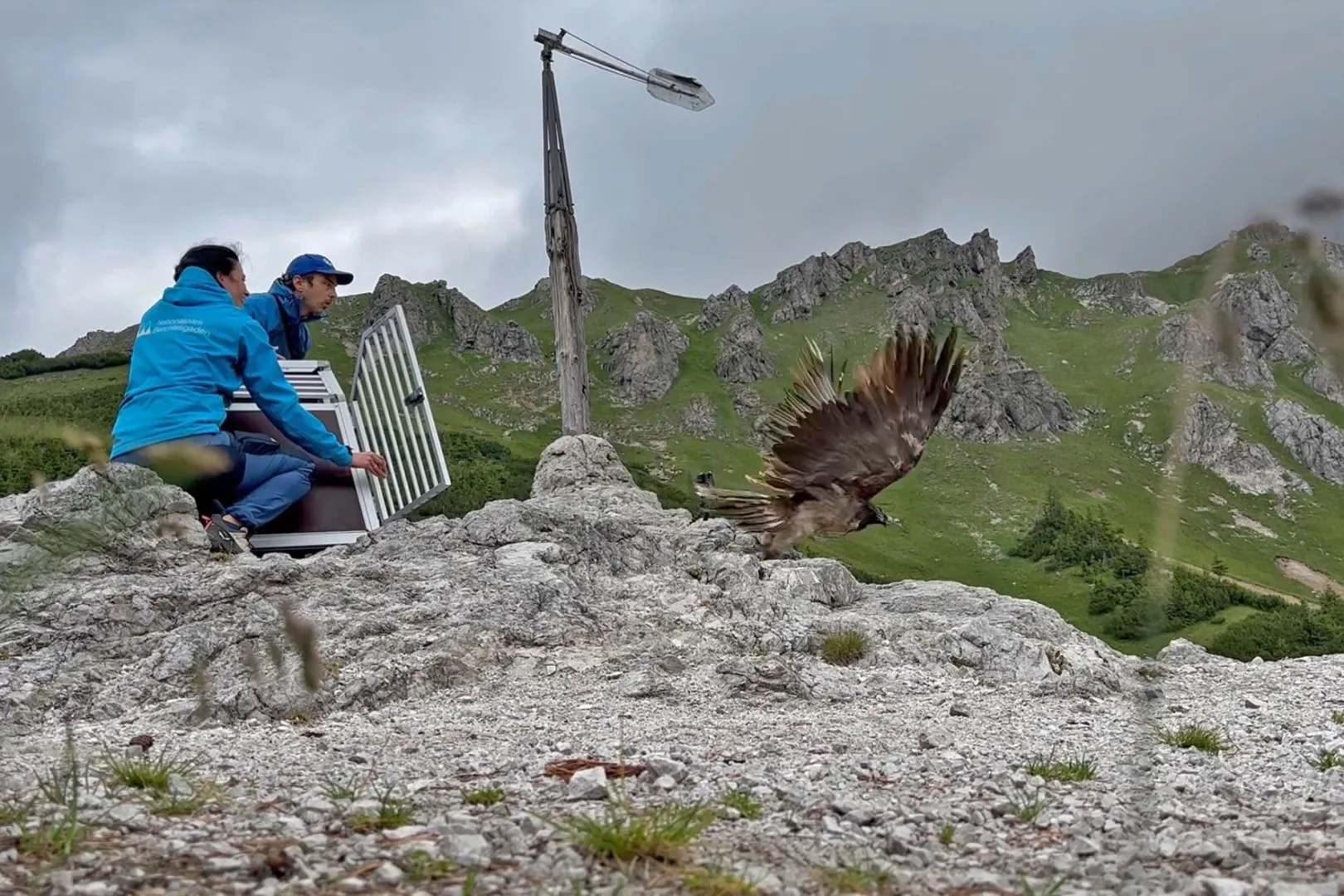Only nine years after the first bearded vultures were released back into Andalucía, you can see now in this excellent footage, shot by Dr. Francisco Javier Montoro García, the first bearded vulture chick hatched in the wild in a nest high up in the sierra de Cazorla – a huge success in an extraordinary project, and a just reward to the many people that worked so hard to bring back this species to Andalucía, and to the Junta de Andalucía, that since day 1 has invested politically and financially in this project.
The chick is growing well thanks to Tono – a 9 year old male, released in 2006, in the first year of the project, and Blimunda, a 5 year old female released in 2010.
Men made it disappear – and men are bring them back
The bearded vulture was widespread in the mountains of southern Spain until the 40s, but intense human persecution and widespread poisoning cause it to disappear from southern Iberia. The last confirmed breeding took place in Cazorla in 1983, and in 1986 the last adult also disappeared.
The first movements for a reintroduction happened as far back as 1991, when the Junta de Andalusia led a feasibility study for a reintroduction project. In 1996 an agreement was then signed between the Junta and the Foundation for the Conservation of the Bearded Vulture (the precursor of the VCF) to establish a specialized captive breeding centre in Guadalentin (Sierra de Cazorla), with birds provided by the FCBV.
This center has been working ever since within the bearded vulture European Endangered Species Programme (EEP), managed by the VCF, and currently houses 20 birds, and six breeding pairs.
Releases in Andalusia started in 2006, after the Junta, and Fundacion Gypaetus, established locally to manage the project, and started an ambitious conservation programme, mainly focussed on minimizing the endemic tradition of poisoning the sierras to control predators. The number of poisoning incidents in Andalusia as a whole, and the Sierras de Cazorla/Segura/Castril in particular, decreased spectacularly, so releases could start. Unfortunately in 2011 two bearded vultures were found poisoned, so releases were temporarily halted that year to reinforce the antipoisoning work – there has been no mortality since 2012.
So far a total of 33 birds have been released there, including 2 today. At least 17 of these are still alive.
The VCF would like to thank all the staff of Fundacion Gypaetus, and the Junta de Andalusia, and to all volunteers and bearded vulture enthusiasts like Dr. Francisco Javier Montoro García, for their unwavering commitment and effort to make this project successful. We are getting closer to another dream – restore the bearded vulture in southern Iberia!



